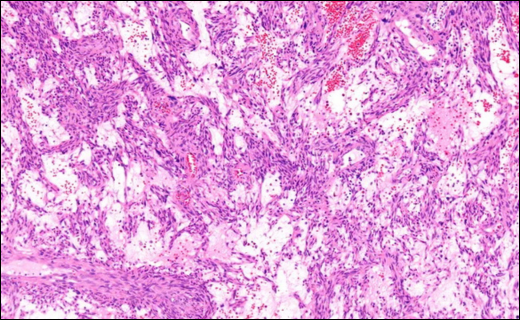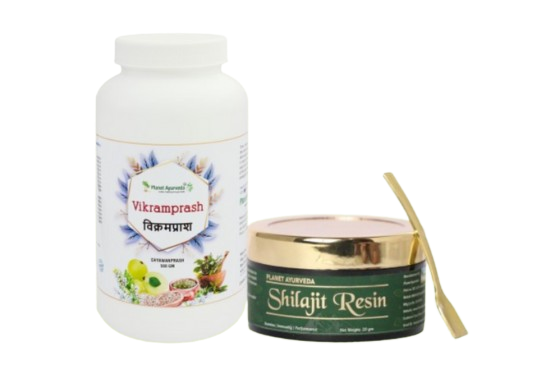Paratesticular Pleomorphic Leiomyosarcoma: Causes, Symptoms, Diagnosis & Treatment Options
Abstract
Sarcoma is a rare type of cancer that develops in the connective tissues of the body, such as muscles, fat, nerves and blood vessels. It accounts for less than 1% of all adult cancers. Although sarcomas are uncommon, they can be serious and may grow quickly or spread to other parts of the body if not treated early. One of such sarcomas is Paratesticular pleomorphic leiomyosarcoma is a very rare type of cancer that arises from the smooth muscle cells surrounding the testis, including the spermatic cord, epididymis, or tunica. So let’s discuss this sarcoma in detail.

Introduction
Paratesticular pleomorphic leiomyosarcoma is a rare malignant soft tissue tumor arising from undifferentiated smooth muscle cells, most commonly originating in the spermatic cord or epididymis. It typically presents as a slow growing, firm scrotal mass. Due to its rarity, it is frequently misdiagnosed as benign or confused with other paratesticular tumors unless histopathology is performed. It is most frequently seen in men between 50–70 years.
Causes
There are no specific causes that are mentioned however some risk factors are others which are believed to predispose to this condition. These are:
- Previous Radiation Therapy
- Use of anabolic steroids
- Genetic mutations
- Long standing chronic inflammation
Symptoms
- Painless scrotal mass that is progressively increasing in size
- Scrotal swelling or enlargement
- Discomfort or heaviness
- Lower abdominal pain, weakness, weight loss in case it metastasizes
Diagnosis
- Clinical examination
- Ultrasonography
- MRI of pelvis or scrotum
- Biopsy
- Immunoistochemistry (positive for desmin, smooth muscle actin)
Treatment
Its management mainly involves the surgical excision.
- Radical Inguinal Orchiectomy with high spermatic cord ligation
- Adjuvant radiation therapy
- Chemotherapy
- Symptomatic management
Ayurvedic Overview
As per Ayurveda, it can be concluded under arbuda (tumour) Roga. It refers to a group of disorders characterized by uncontrolled and abnormal cell proliferation which have the potential to infiltrate or spread to other parts of the body. Paratesticular pleomorphic leiomyosarcoma can be correlated with the mamsarbuda (tumor involving muscle tissue) which is a subtype of arbuda (tumor). When all three doshas become aggravated, they disturb the dhatus (body tissues), particularly Rakta (blood) and Mamsa (muscle), leading to the impairment of Agni (digestive fire) and the formation of Ama (metabolic toxins). This Ama (metabolic toxins) causes obstruction in the srotas (body channels), resulting in swelling that is often circular, deep rooted, elevated and rapidly increasing in size. Also constant trauma and damage to a particular area may trigger abnormal growth.
Chronic accumulation of ama (metabolic toxins), poor agni (digestive fire) and obstruction of srotas (body channels) promote malignant changes. Acharya Sushruta has mentioned its symptoms in nidana sthaana and that are:
It leads to symptoms like avedanam (painless), snigdha (unctuous), apaka (without suppuration), ashamopam (hard like a stone) and aprachlyam (without movement; stable). This condition is commonly found in those with vitiated mamsa dhatu (muscle tissue). The Ayurvedic management of tumours primarily focuses on Strengthening digestive power and eliminating Ama, regulating Vata (as uncontrolled Vata is considered the key driver of abnormal cell proliferation) and boosting oja (immunity) and involves Shamana (pacifying measures), Shodhana (cleansing and detoxification therapies), surgical procedures, Rasayana (rejuvenation therapy). The Shamana (pacifying measures) include use of formulations like kachnaar guggulu, abhyarishta, panchtikta guggulu ghrita, khadirarishta, etc.
Other than these, procedures like basti (Enema therapy), virechana (Purgation therapy) are done to detoxify and maintain balance in body and surgical interventions such as Kshara (alkaline applications), Shastra procedures (surgical excision like Chedana) and Agni Karma (therapeutic cauterization) are employed to remove or manage abnormal tissues and tumours.
Lifestyle modifications to follow
- Intake of light food and engage in regular exercise
- Eating wholesome and appropriate foods
- Maintaining a proper sleep routine
- Practising meditation and calming the mind
- Avoiding viruddha ahara (incompatible food combinations)
- Reducing stress and anxiety
- Ensuring healthy digestion to prevent Ama accumulation
- Avoiding excessive intake of white sugar, white salt, refined flour and white rice
Herbal Remedies for Paratesticular Pleomorphic Leiomyosarcoma Planet Ayurveda’s Remedies
Planet Ayurveda is a globally trusted Ayurvedic brand which offers 100% herbal, chemical free formulations based on classical Ayurvedic texts. With a GMP certified manufacturing unit, strict quality control and expert doctors, it provides effective remedies for chronic diseases. The brand delivers high quality herbal supplements worldwide, promoting holistic healing through authentic Ayurveda. Planet Ayurveda focuses on supporting cancer management naturally by using Ayurvedic herbs and formulations that help improve immunity, detoxify the body, reduce side effects of conventional treatments and enhance overall strength. Some of the products are:
Product List
- Kanchnaar Guggul
- Tribulus power
- Tribulus power
- Crab Curcumin 95%
- Pitta Shamak 2
- Chandraprabha Vati
- Vriddhivadhika Vati
Product Discription
1. Kanchnaar Guggul
It is a classical formulation in tablet form which includes kanchanar (Bauhinia variegata), guggul (Commiphora mukul) and blends like triphala, trikatu, etc. It exhibits properties such as deepana (digestive stimulant), pachana (digestive), Vata Kapha Shamak (balancing Vata and Kapha), Shothahara (anti inflammatory), Lekhana (scraping/reducing) and Bhedi (penetrating/clearing), which helps to control abnormal tissue proliferation. Phenolics, guggulsterones and tannins reduce oxidative stress and remove cellular toxins.
Dosage: 2 twice daily with plain water after meals.
2. Tribulus power
It is a capsule formulation of Planet Ayurveda which contains standardised extract of Gokshur (Tribulus terrestris). It has Vata Kapha pacifying and its Rakta and Meda shodhana (blood and fat tissue detoxification) actions thus helps to reduce tissue stagnation and supports the body’s natural regenerative and cleansing processes. Its Shita Virya (cooling potency) helps control inflammation and swelling around the affected site.
Dosage: 1 twice daily with plain water after meals.
3. Crab Baccata
It is a capsule formulation of Planet Ayurveda which contains the standardised extract of Sthauneyaka (Taxus baccata). Its principal component (Paclitaxel) inhibits tumor cell mitosis and proliferation by promoting microtubule stabilization.
Dosage: 1 twice daily with plain water after meals.
4. Crab Curcumin 95%
It is a capsule formulation of Planet Ayurveda which contains haridra (Curcuma longa) and maricha (piper nigrum). It contains curcumin which exhibits anti proliferative properties and induces the selective apoptosis. It also inhibits VEGF (Vascular Endothelial Growth Factor), thus preventing the tumor from creating new blood vessels and the tumor size will not be increased.
Dosage: 1 twice in a day with plain water after meals.
5. Pitta Shamak 2
It is a capsule formulation of Planet Ayurveda which contains pitta papda (Fumaria indica) and patol (Trichosanthes dioica). As there is inflammation and metabolic toxins that are present in the body due to the uncontrolled growth, its alkaloids like fumariline, protopine help in detoxification and removing the free radicals and by balancing pitta dosha. It is used for its blood purifying, anti-inflammatory, hepatoprotective and digestion properties.
Dosage: 1 twice daily with plain water after meals.
6. Chandraprabha Vati
It is a classical formulation in tablet form which include shilajit (Asphaltum), guggul (Commiphora mukul), vacha (Acorus calamus), yavakshaar (potassium carbonate), sarjikshar (sodium carbonate), etc. It helps to eliminate various toxins formed in the body and is beneficial in loss of appetite, indigestion, nausea, heaviness and low Agni (digestive fire). It also is a rasayana so helps in nutritive crisis and immuno compromised state.
Dosage: 2 twice daily with plain water after meals.
7. Vriddhivadhika Vati
It is a classical formulation in tablet form which include shudha parad (Purified mercury), shudha gandhak (Purified sulphur), loha bhasma (Iron calx), Vang bhasma (Tin calx), Shankh bhasma (Pearl calx) etc. It is used for managing abnormal tissue growths associated with Kapha and Vata imbalance and regulating tissue proliferation, reducing hardness of localized swellings and improving the breakdown of accumulated pathological masses.
Dosage: 2 twice daily with plain water after meals.
Conclusion
Paratesticular pleomorphic leiomyosarcoma is a rare and aggressive soft tissue malignancy arising from smooth muscle structures surrounding the spermatic cord, epididymis or testicular tunics. Although uncommon, its clinical significance lies in its potential for rapid growth and local invasion and this explains the necessity for rapid diagnosis and treatment. Modern treatment remains centered on wide surgical excision with clear margins, often supplemented by radiotherapy or chemotherapy in advanced or high grade cases. Whereas Ayurveda focuses at balancing aggravated doshas, particularly Vata and Pitta, cleansing accumulated toxins (Ama), enhancing digestive fire (Agni) and promoting systemic rejuvenation. This helps in strengthening Dhatu (tissue) integrity, supporting immune function and improving the body’s inherent resistance to abnormal cellular proliferation.




